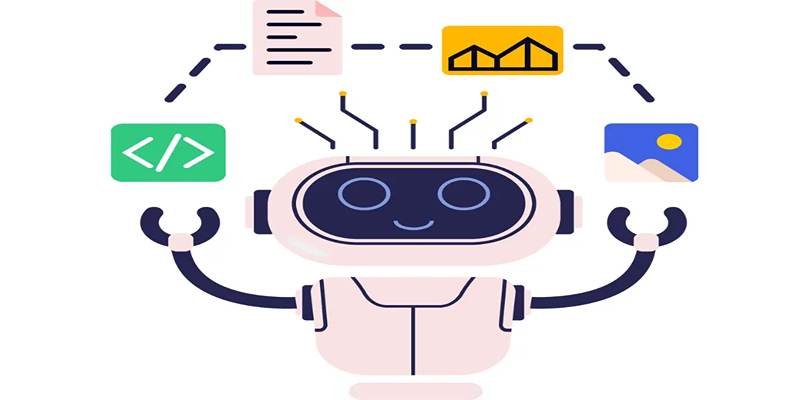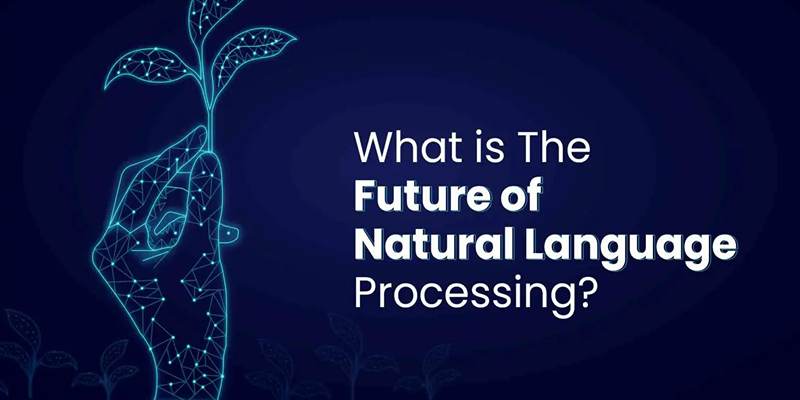The rapid evolution of Natural Language Processing (NLP) has significantly impacted our daily lives, influencing how to interact with technology and each other. Traditionally, NLP systems focused exclusively on textual data, interpreting human languages through written or spoken words.
However, as technology progresses, NLP is shifting toward multimodal capabilities—integrating text with other modes of communication, such as images, audio, and even gestures. This transition promises to revolutionize artificial intelligence (AI) by making it more versatile, human-like, and contextually aware.
What is Multimodal NLP?
Multimodal NLP refers to systems that integrate multiple data forms to comprehend, analyze, and respond to human inputs effectively. Instead of solely relying on textual information, multimodal NLP considers various modalities, including visual, auditory, and spatial cues, to achieve a richer understanding. By merging text with images, video, or speech, these systems can interpret meanings more accurately, mirroring human communication patterns.
Why Multimodal NLP Matters
Human communication is inherently multimodal. When you communicate, you naturally use a combination of speech, facial expressions, gestures, and visual aids to deliver and interpret messages. Traditional NLP, confined to text, misses critical contextual clues that humans instinctively recognize. By moving beyond text, multimodal NLP aligns AI systems with real-world communication methods, enhancing their effectiveness and making interactions smoother, more intuitive, and human-friendly.
For instance, consider virtual assistants such as Siri or Alexa. Currently, their interactions primarily depend on voice and textual interpretation. With multimodal advancements, these assistants could better understand the visual context—interpreting user emotions through facial expressions or gestures and responding appropriately, thus elevating user experience significantly. Such improvements could lead to assistants proactively adjusting their responses or even initiating supportive interactions based on subtle user cues.
Key Applications of Multimodal NLP

- Healthcare and Diagnostics: In medical scenarios, multimodal NLP can assist in diagnosing illnesses by integrating patient conversations, vocal intonations, and imaging results. AI could effectively interpret radiology scans alongside patient histories, providing more precise diagnoses and personalized treatment recommendations. Additionally, these systems could monitor patients continuously, analyzing vocal stress patterns and visual signs of discomfort to predict and prevent health crises.
- Education and E-learning: Educational platforms utilizing multimodal NLP can understand students' responses not just through their answers but also through visual feedback, such as confusion or confidence shown through facial expressions. This understanding enables tailored learning experiences, providing timely assistance when students struggle. Further, AI-driven education systems could dynamically adjust content delivery methods—shifting between visual aids, interactive tasks, or verbal explanations to match individual learning styles.
- Marketing and Customer Engagement: Businesses leveraging multimodal NLP can analyze customer interactions across video, audio, and text, enabling deeper insights into consumer sentiment and behavior. For example, detecting subtle emotional cues through visual and auditory data helps marketers better understand and respond to customer preferences. Enhanced multimodal capabilities can also empower companies to create personalized marketing campaigns that resonate more deeply with consumers, fostering stronger brand loyalty and higher engagement rates.
- Accessibility Technologies: For individuals with disabilities, multimodal NLP offers transformative potential. Systems capable of interpreting gestures, sign language, and visual information can drastically improve accessibility, offering communication alternatives that transcend traditional text or speech boundaries. This approach not only empowers individuals with disabilities but also promotes inclusivity by providing seamless, barrier-free interactions in everyday environments.
Challenges in Multimodal NLP
Despite its promising potential, multimodal NLP faces several significant hurdles. Integrating different modalities introduces complexity, requiring sophisticated algorithms and extensive training data. Data alignment and synchronization become critical, as mismatches between audio, visual, and textual inputs can degrade the accuracy of AI interpretations. Furthermore, creating datasets that reflect genuine multimodal interactions remains challenging, given the need for rich, diverse, and representative samples.
Addressing privacy concerns is also paramount. Multimodal systems often involve capturing sensitive visual and auditory data, necessitating robust ethical frameworks and strict privacy measures to ensure responsible AI deployment. Ensuring transparency about data use, giving users clear control over their data, and implementing rigorous security protocols will be essential in fostering public trust and widespread acceptance of multimodal technologies.
Advancements Shaping the Future of Multimodal NLP
Recent developments in deep learning, particularly transformer models, have significantly advanced multimodal NLP capabilities. Innovations such as OpenAI's GPT-4 and Google's Gemini showcase substantial improvements in understanding combined textual and visual contexts. These models can not only describe visual scenes accurately but also reason about them logically, moving closer to human-level comprehension.
Moreover, the advent of Generative AI has opened new possibilities. AI systems are now capable of creating content that merges text with visual and auditory elements seamlessly, fostering richer interactions and more engaging content. These capabilities are already evident in applications like AI-generated videos, interactive virtual environments, and immersive AR/VR experiences. As these technologies continue to mature, the boundary between human-generated and AI-generated content will increasingly blur, creating novel interaction paradigms and opportunities.
What the Future Holds

Looking ahead, multimodal NLP will undoubtedly become integral to various industries, reshaping the way you engage with technology. The future holds promise for even more sophisticated AI interactions that seamlessly blend multiple modalities, enabling machines not only to understand human communication but to participate in it meaningfully.
You can envision virtual assistants that perceive and adapt to emotional contexts during interactions. These educational tools dynamically adjust based on real-time feedback and accessibility devices that empower users through natural, intuitive communication methods. These advancements will bridge the gap between artificial and human intelligence, leading us to an era where technology genuinely comprehends and mirrors human experiences.
Conclusion
The journey toward multimodal NLP represents a transformative shift in artificial intelligence, moving beyond mere textual understanding to embrace a holistic view of communication. While challenges remain, the continuous advancements promise a future where AI systems understand us deeply, respond empathetically and enhance every aspect of our interactions.
